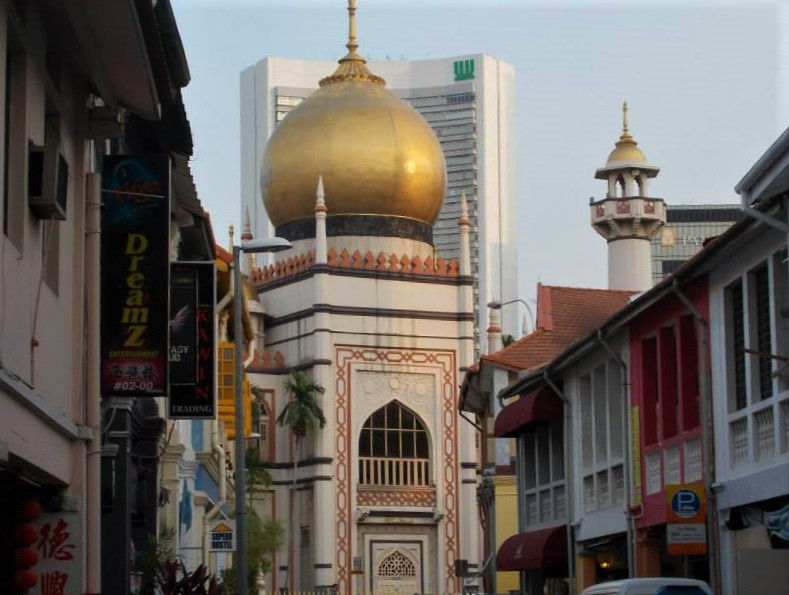Sultan Mosque
- Matthew P G

- Mar 24, 2022
- 3 min read
Updated: Mar 17, 2023

Sultan Mosque. December 2014
I still remember the Sultan Mosque from my first visit to Singapore. Even though it was in the Kampong Glam/Arab Street neighborhood, I found it highly unusual given Singapore's overall "Chinese-ness". On my first visit, back in 1986 with my friend Masaaki, we were invited inside to have a look around. The mosque-minders were happy that we were there and having a look. Oh, how the world has changed....
When the British "bought" Singapore from the Sultan of Johor, he retained some land for a royal residence and then saw fit to have a mosque built nearby:
In 1824, Sultan Hussein Shah of Johor signed an agreement with the British East India Company (EIC), which effectively ceded Singapore to the latter for the establishment of a British trading port on the island. The British agreed to pay an annual stipend to the Sultan and his descendants, and to recognize Kampong Glam as the royal family’s asset. In addition, a parcel of land was set aside for a royal mosque near Istana Kampong Glam, then the residence of the Sultan of Johor. Sir Stamford Raffles later pledged a contribution of 3,000 Spanish dollars from the EIC to the royal mosque’s building fund. The original mosque was a single-story brick structure with a two-tiered pitched roof, an architectural feature typical of traditional Southeast Asian mosques.
Interesting for me was learning that the original structure used to be a more typical Southeast Asian mosque design - a two-tiered pyramid roof (actually based on Hindu temples in Java). After that structure wore out, they decided to replace it with an entirely new one, which is the one I have always known.
By 1924, it had become clear that the century-old structure was in dire need of repairs. The trustees of the mosque then approved the construction of a larger mosque on the site. Irish architect Denis Santry from the local architectural firm Swan & Maclaren was commissioned for the project; he also designed the Cenotaph, Telok Ayer Chinese Methodist Church, and Former Tanjong Pagar Railway Station. ..... Muslims from the various ethnic communities in Singapore donated generously to the building project. Finally, by 26 February 1932, the reconstruction of the mosque was completed with only minor works left to be done. The iron and brick wall enclosing the mosque was to be completed by the end of the year. https://www.roots.gov.sg/places/places-landing/Places/national-monuments/sultan-mosque
Again, fascinating back story on the mosque - the place was designed by an Irishman! In fact, the British had built "faux-Islamic" buildings all over Malaya. I am not sure if they thought they were keeping the local Malay Muslim population happy or they were exporting architectural style from then British India? Fast forward to my time living in Singapore and the Sultan Mosque had been all spiffed up (as had all of Kampong Glam). The mosque was now the official heart of the Muslim community of Singapore. Unfortunately, in those intervening years it had become off-limits to non-Muslims except on tours. I might also add that the formerly friendly minders had become rather brusque. Several visits there with friends ended with us being summarily dismissed from the premises.
Now I will give the benefit of the doubt to the mosque minders - in the years since I had first visited Singapore had become a massive tourist hub and perhaps the mosque was just tired of all the visitors (although the Chinese and Hindu temples in town had no issues with tourists). In any event, my last visit was a non-visit because I didn't arrive at a specified visitation time, on a tour. To add insult to injury, I was told "it has always been this way" ("no dear sir, I beg to differ") The world clearly does not always change for the better.



Comments